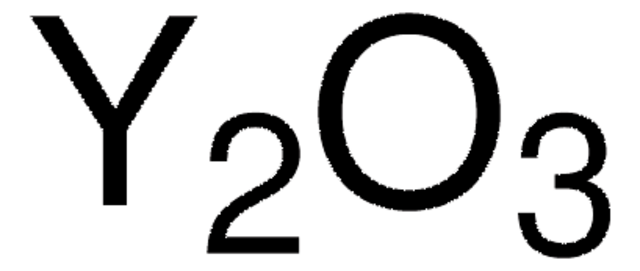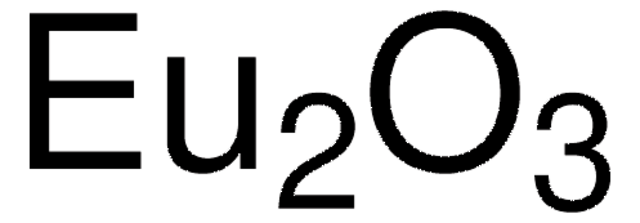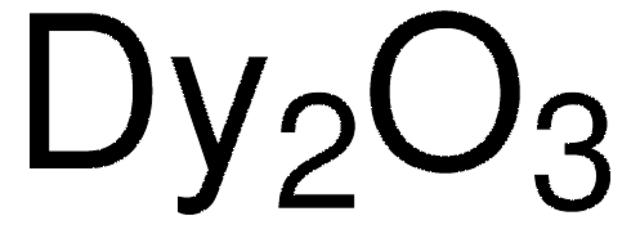544892
Yttrium(III) oxide
nanopowder, <50 nm particle size
Synonym(s):
Yttria
About This Item
Recommended Products
form
nanopowder
greener alternative product characteristics
Design for Energy Efficiency
Learn more about the Principles of Green Chemistry.
sustainability
Greener Alternative Product
surface area
30-50 m2/g
particle size
<50 nm
mp
2410 °C (lit.)
density
5.01 g/mL at 25 °C (lit.)
greener alternative category
SMILES string
O=[Y]O[Y]=O
InChI
1S/3O.2Y
InChI key
SIWVEOZUMHYXCS-UHFFFAOYSA-N
Looking for similar products? Visit Product Comparison Guide
General description
Application
- Preparation and characterization of yttrium oxide nanoparticles at different calcination temperatures: This study examines the preparation methods and characteristics of yttrium oxide nanoparticles, highlighting their thermal stability and potential applications in various fields (AJ Abdulghani, WM Al-Ogedy, 2015).
- Water assisted atomic layer deposition of yttrium oxide: Describes the development and analysis of yttrium oxide thin films, essential for enhancing the performance of electronic and optical devices (L Mai, N Boysen, E Subaşı, T de Los Arcos, D Rogalla, 2018).
- Modification of stability properties of yttrium (III) oxide particles: Focuses on the stabilization of yttrium oxide particles for enhanced performance in environmental and technological applications (M Wiśniewska, K Herda, T Urban, P Nowicki, 2024).
- Gamma ray induced thermoluminescence studies of yttrium (III) oxide nanopowders: Investigates the thermoluminescent properties of yttrium oxide doped with gadolinium, relevant for radiation detection and dosimetry (RK Tamrakar, K Upadhyay, DP Bisen, 2014).
- Yttrium oxide nanoparticle synthesis: Provides an overview of the methods for synthesizing yttrium oxide nanoparticles and their biomedical applications, highlighting the material′s versatility and potential for future innovations (G Rajakumar, L Mao, T Bao, W Wen, S Wang, 2021).
Storage Class Code
13 - Non Combustible Solids
WGK
WGK 1
Flash Point(F)
Not applicable
Flash Point(C)
Not applicable
Personal Protective Equipment
Certificates of Analysis (COA)
Search for Certificates of Analysis (COA) by entering the products Lot/Batch Number. Lot and Batch Numbers can be found on a product’s label following the words ‘Lot’ or ‘Batch’.
Already Own This Product?
Find documentation for the products that you have recently purchased in the Document Library.
Customers Also Viewed
Articles
The union of distinct scientific disciplines is revealing the leading edge of Nanotechnology.
As with all types of fuel cells, a Solid Oxide Fuel Cell (SOFC) is capable of efficiently transforming chemical energy into electrical energy.
White solid-state light can be generated using three different approaches: By employing three diodes that emit red, green and blue light respectively, by using a near-UV LED that excites several phosphors that emit over the complete spectral range, or the third, most widely used alternative entailing down-conversion of a portion of blue LED light to longer wavelengths in such a manner that white light emerges.
Magnetic materials permeate numerous daily activities in our lives. They are essential components of a diversity of products including hard drives that reliably store information on our computers, decorative magnets that keep the shopping list attached to the refrigerator door, electric bicycles that speed our commute to work, as well as wind turbines for conversion of wind energy to electrical power.
Our team of scientists has experience in all areas of research including Life Science, Material Science, Chemical Synthesis, Chromatography, Analytical and many others.
Contact Technical Service






